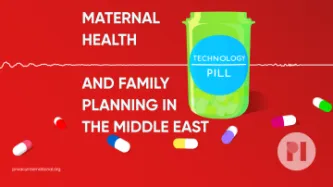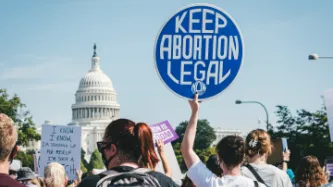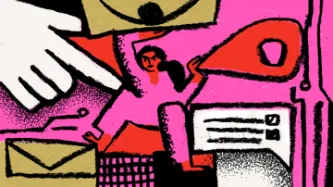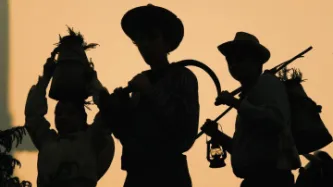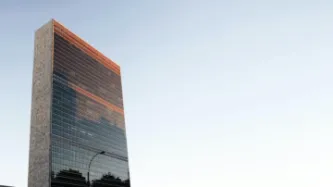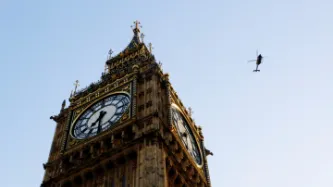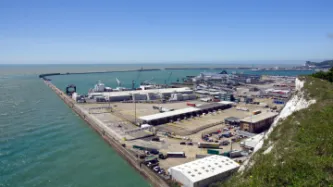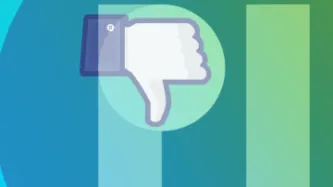Advanced Search
Content Type: Video
Nour El Arnaout is a division manager at the Global Health Insitute at the American University of Beirut, where she also co-ordinates the Institutes's E-Sahha programme focussed on e-health and digital health. She has more than 7 years experience in projects and programmes management, operational management and research, and leads the implementation of large scale field based projects in underserved communities in Lebanon including refugee settlements. She is working on a project called: The…
Content Type: News & Analysis
The relationship between privacy and access to abortion care
In 1973, in the state of Texas, it was a criminal offence to “procure or attempt” an abortion except if the purpose was “saving the life of the mother.” This law was enacted in 1854 by the Texas state legislature, and was part of a wave of provisions criminalising access to abortion care that was gaining ground across the U.S in the mid-1800s. It is worth highlighting that these laws were being passed at a time when women in the U.S…
Content Type: Long Read
In the wake of the recent news of the US Supreme Court’s decision to overturn the ruling of Roe v Wade in its ruling in Dobbs v Jackson Women's Health Organization, headlines have been dominated by conversations around privacy and fears of how the criminalisation of abortion care and surveillance by law enforcement will play out in a tech driven world.This discussion is increasingly important as governments move towards digitising their healthcare systems and as more individuals choose to…
Content Type: Long Read
The global COVID-19 health crisis not only induced a public health crisis, but has led to severe social, economic and educational crises which have laid bare any pre-existing gaps in social protection policies and frameworks. Measures identified as necessary for an effective public health response such as lockdowns have impacted billions workers and people's ability to sustain their livelihood worldwide, with countries seeing unprecedented levels of applications for welfare benefits support,…
Content Type: Advocacy
Content Type: Long Read
The same day that the United Nations General Assembly convened an emergency special session to respond to Russia’s full-scale invasion of Ukraine in early March, a very different set of negotiations was underway in another U.N. conference room. More than two years after its establishment, the Ad Hoc Committee to Elaborate a Comprehensive International Convention on Countering the Use of Information and Communication Technologies for Criminal Purposes (hereinafter the Ad Hoc Committee) held its…
Content Type: Financial Report
Audited accounts for the year ending January 31, 2021.
Content Type: Advocacy
In our submission we outline our concerns with the industry as a result of extensive technical research and complaints taken to data protection authorities in Europe as a result.
Data brokers must specifically be included in "actors in scope."
We recommend that "data brokers" are specifically included in the list of "actors in scope". A data broker is a company that collects, buys and sells personal data and this is often how they earn their primary revenue. It is a term that is entering…
Content Type: Advocacy
Privacy International (PI) welcomes the call of the Special Rapporteur on the human rights of migrants to assess the human rights impact of current and newly established border management measures with the aim of identifying effective ways to prevent human rights violations at international borders, both on land and at sea.
The issues highlighted in the call for submissions are ones that PI has been investigating, reporting and monitoring as part of our campaigns demanding a human rights…
Content Type: Examples
The Burkina Faso government cut off internet access across the country following protests demanding the resignation of president Roch Marc Christian Kabore. Insurgents have attacked military positions as well as gold-mining operations. A government statement said the outage was extended under a legal provision relating to national defence and public security.
https://www.bloomberg.com/news/articles/2021-11-25/burkina-faso-extends-internet-shutdown-before-nov-27-protests?sref=Hjm5biAW Internet…
Content Type: Examples
On January 5, 2022 the Kazakhstan government shut down the internet nationwide in response to widespread civil unrest after the government's removal of a price cap led liquid natural gas prices to rise sharply. Government use of a kill switch to block internet access is rising as a way of suppressing dissent and exercising social control; other examples include Iran, Sudan, Egypt, China, and Uganda. Kazakh law permits the government to temporarily suspend communications networks; much of the…
Content Type: Examples
On December 25, 2021, Sudanese security forces shot and killed four pro-democracy protesters and wounded hundreds of others who, among tens of thousands of people, defied a security lockdown and telecommunications network shutdowns to demonstrate against military rule, AFP News reports. Security forces installed new CCTV cameras on major thoroughfares in advance of the protests, which demanded a transition to a civilian government. Activists have also condemned sexual attacks on women and girls…
Content Type: Examples
Following a complaint from the Association for Civil Rights in Israel, the country's attorney general has said the Shin Bet security agency's use of mobile phone tracking technology to monitor and threaten Palestinian protesters at Jerusalem's Al Aqsa Mosque in May 2021 was a legitimate security tool, Josef Federman reports at ABC News. Shin Bet sent a text message to both Palestinian residents of east Jerusalem and Palestinian citizens of Israel who were determined to be in the area of the…
Content Type: Examples
Just as China uses technology system called "Integrated Joint Operations Platform" to control and surveil the persecuted population of Uighurs while restricting their movement and branding dissent as "terrorism", the Israeli military is using facial recognition and a massive database of personal information to control millions of Palestinians in the occupied West Bank. In November 2021, NSO Group's Pegasus spyware was found on the phones of six Palestinian human rights activists, three of whom…
Content Type: Examples
The Israeli minister of public security has joined police in denying claims in an article in Calcalist that the country's police force have used NSO Group's Pegasus software to spy on the phones of people who led protests against former premier Benjamin Netanyahu. Calcalist reported that the surveillance was carried out without court supervision or oversight of how the data was used. The daily Haaretz newspaper also reported that it had seen a 2013 invoice in which NSO billed police @@2.7…
Content Type: Examples
Ukraine and Russia are both weaponising facial recognition - but Russia is using it to hunt down anti-war protesters, holding and sometimes torturing anyone who refuses to be photographed, while Ukraine is using software donated by Clearview AI to help find Russian infiltrators at checkpoints, identify the dead and reunite families. Russia's widespread surveillance means that activists can be followed and arrested anywhere. In an approved, peaceful anti-government rally in Moscow in 2019,…
Content Type: Examples
Footage captured by Bloomberg shows that police are arresting anti-war protesters in Russia and scrolling through their phones.
https://www.bloomberg.com/news/videos/2022-03-07/russian-police-search-protesters-phones-make-arrests-video
Writer: Kommersant
Publication: Bloomberg TV
Publication date: 2022-03-07
Content Type: Examples
Based on a draft methodology from Russia's Emergency Situations Ministry, Kommersant business daily reports that Rostec's data subsidiary, Natsionalny Tsentr Informatizatsii, is developing software that will use machine learning to detect and prevent mass unrest. The software will analyse news reports, social media postings, public transport data, and video surveillance footage; if it fails to prevent mass unrest it is expected to direct the crowd's movements to stop it from escalating. The…
Content Type: Examples
The Kommersant reports that Russia's Rostec State Corporation is developing a new AI-powered anti-riot surveillance system that uses biometrics-powered cameras and can search social media networks and other publicly accessible data and intends to deploy the new system by the end of 2022. The behaviou analysis software is being developed as part of the Safe City project under the aegis of the Ministry of Emergency Situations, which intends to spend 97 billion rubles ($1.3 billion) deploying Safe…
Content Type: Examples
The energy company Cuadrilla used Facebook to surveil anti-fracking protesters in Blackpool and forwarded the gathered intelligence to Lancashire Police, which arrested more than 450 protesters at Cuadrilla's Preston New Road site over a period of three years in a policing operation that cost more than £12 million. Legal experts have called the relationship between fracking companies and the police "increasingly unhealthy" and called on the ICO and the Independent Office for Police Conduct to…
Content Type: Examples
Environmental campaigners wrote to Scottish first minister Nicola Sturgeon asking her to intervene to ensure the right to protest was upheld during COP26, when as many as 10,000 police officers from all over the UK were deployed per day on the streets of Glasgow. The letter said the police were reportedly filming campaigners, eavesdropping on conversations, unlawfully demanding personal details, and in one case followed a group to where they were staying even though no protest was in progress.…
Content Type: Examples
Emails obtained by EFF show that the Los Angeles Police Department contacted Amazon Ring owners specifically asking for footage of protests against racist police violence that took place across the US in the summer of 2020. LAPD signed a formal partnership with Ring and its associated "Neighbors" app in May 2019. Requests for Ring footage typically include the name of the detective, a description of the incident under investigation, and a time period. If enough people in a neighbourhood…
Content Type: Examples
Since the May 2020 murder of George Floyd, Minnesota law enforcement agencies have carried out a secretive, long-running surveillance programme targeting journalists and civil rights activists known as Operation Safety Net, a complex surveillance engine that has expanded to include collecting detailed facial images, scouring social media, and tracking mobile phones. Documents obtained via public records requests show that the police continued using the powers granted under OSN to monitor…
Content Type: Examples
After the January 6 insurrection at the US Capitol, the Department of Homeland Security expanded its monitoring of online activity and set up a new intelligence branch to counter domestic terrorism, including tracking platforms that have been linked to threats and “narratives known to provoke violence”. The agency warned law enforcement partners when appropriate when it saw upticks in activity on platforms linked to white supremacists and neo-Nazis. The Brennan Center for Justice warns in a new…
Content Type: Examples
According to internal documents obtained by the Brennan Center, the Polish “strategic communications” specialist Edge NPD, whose business is helping companies with market research, provided the Los Angeles Police Department with a free 40-day trial in which it collected nearly 2 million tweets, including thousands relating to six topics, including Black Lives Matter and “defund the police”. LAPD did not ultimately enter into a contract with the company; the documents do not say what the agency…
Content Type: Examples
According to internal documents, the San Francisco Police Department illegally spied on thousands of Bay Area residents protesting in 2020 against the murder of George Floyd and racist police violence. To conduct its surveillance, the SFPD used a network of more than 300 video cameras in downtown’s Union Square even though the city had passed an ordinance in 2019 that banned SFPD and other city agencies from using facial recognition and requiring them to get approval before using other…
Content Type: Examples
Internal documents show that local police coordinated with Enbridge, the oil company building the Line 3 pipeline through northern Minnesota, to track and crack down on indigenous opposition to the development in an initiative known as Opposition Driven Operational Threats (ODOT). Enbridge designed ODOT to spot emerging outside threats to its business, defining “threat!” as anything from reputational harm to property damage. In 2021, ODOT tracked more than a dozen “threat actors”, including…
Content Type: Examples
At his 2021 trial, prosecutors used previously-unseen infrared footage from FBI airplane surveillance at 9,000 feet to attempt to show that 18-year-old Kyle Rittenhouse chased one of the two people he later claimed to have shot in self-defence. Rittenhouse travelled from his home in Illinois to Wisconsin to join a protest following the 2020 police shooting of Jacob Blake. Aerial surveillance of people in public places is legal in the US, but illegal if directed at a single person for an…
Content Type: Press release
Meta, the largest provider of social media sites and display advertising in the UK, acquired GIPHY, the largest provider of GIFs. In its report of 30 November 2021 the CMA found that the completed merger between Meta and GIPHY will give rise to a substantial lessening of competition.
The CAT confirmed the CMA's assessment and dismissed all but one of Meta’s appeal grounds, paving the way for Meta to sell GIPHY, as demanded by the CMA.
PI was granted permission to intervene in this case, one of…
